Cancellation of Encumbrance (Sec 7 RA 26)
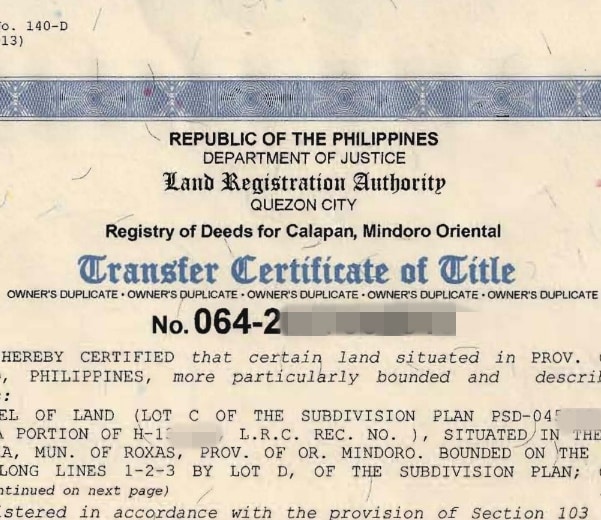
Some encumbrances like liens or mortgages that are already fulfilled can be removed
A reconstituted title is a title that replaced a missing Original Title in the RD.
A reconstituted title will have an annotation on the title itself stating that the title is reconstituted.
Removing the annotation is important so that the title is clean and reassures potential buyers or institutions that there is no risk to the property.
If the annotation remains on the title, this means that there is a potential risk in buying or leasing the property.
So, to remove the annotation on the title, property owners go to court to ask the court to remove it.
(Yes, you have to go to court to remove Sec 7 RA 26 title annotations as with all encumbrances.)
Why do I have a Sec 7 RA 26 annotation and how is it related to the Reconstitution of Title?
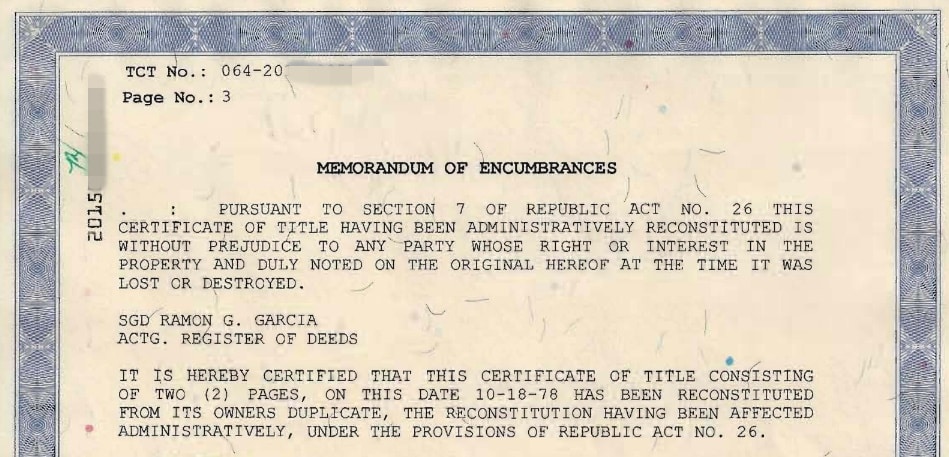
One title can have several encumbrances depending on the situation
A Sec 7 RA 26 annotation is due to a Reconstitution of title case.
Reconstitution of Title in the Philippines is a court case replacing a title lost by the Registry of Deeds.
Reconstitution of Title is based on the following laws:
- Republic Act No. 26, the original law regarding reconstitution
- Republic Act No. 6732, a law allowing administrative reconstitution for cases where at 10% of titles or at least 500 titles held by the Registry of Deeds are destroyed by unfortunate events or calamities
Reconstitution is done because the Registry of Deeds’ copy of title confirms your ownership – if this title is missing, your ownership to property can be challenged even if you have your Original Owner’s copy.
Property owners go to court to reconstitute a title because of this, since they won’t be able to borrow against the title or sell the property at its full price if the Registry of Deeds’s copy of your title is missing.
After a court case, the court will order the Registry of Deeds to create a new Registry of Deeds’s title.
This reconstituted title will have an annotation stating that it is reconstituted.
This annotation is what people want to remove when they talk about cancelling Sec 7 RA 26 on a property title.
What is Section 7 RA 26?

Encumbrance acts as a warning to potential buyers that the property is not clean
Section 7 RA 26 is an annotation stating that the title was recreated.
A recreated title is supposed to have the exact same information as the original title.
However, it might be possible that people in the original title are excluded through error in the recreated title, and the annotation is there to warn people that there may be people who have a claim on the property.
(Just FYI, for those interested in jurisprudence – a new title “shall be without prejudice to any party whose right or interest in the property was duly noted in the original, at the time it was lost or destroyed.” (PNB vs. De la Viña, G.R. No. L-14601, August 31, 1960).
So, the annotation on the tile is a warning.
A warning is needed to inform people that there is a risk that other people may have a claim on the property.
A warning of this nature thus means that there is a risk to the property.
This is why many people want to remove this annotation – it decreases the value of the property and makes other potential buyers or lenders wary of the working with the property.
How do I cancel the encumbrance under Section 7 RA 26?
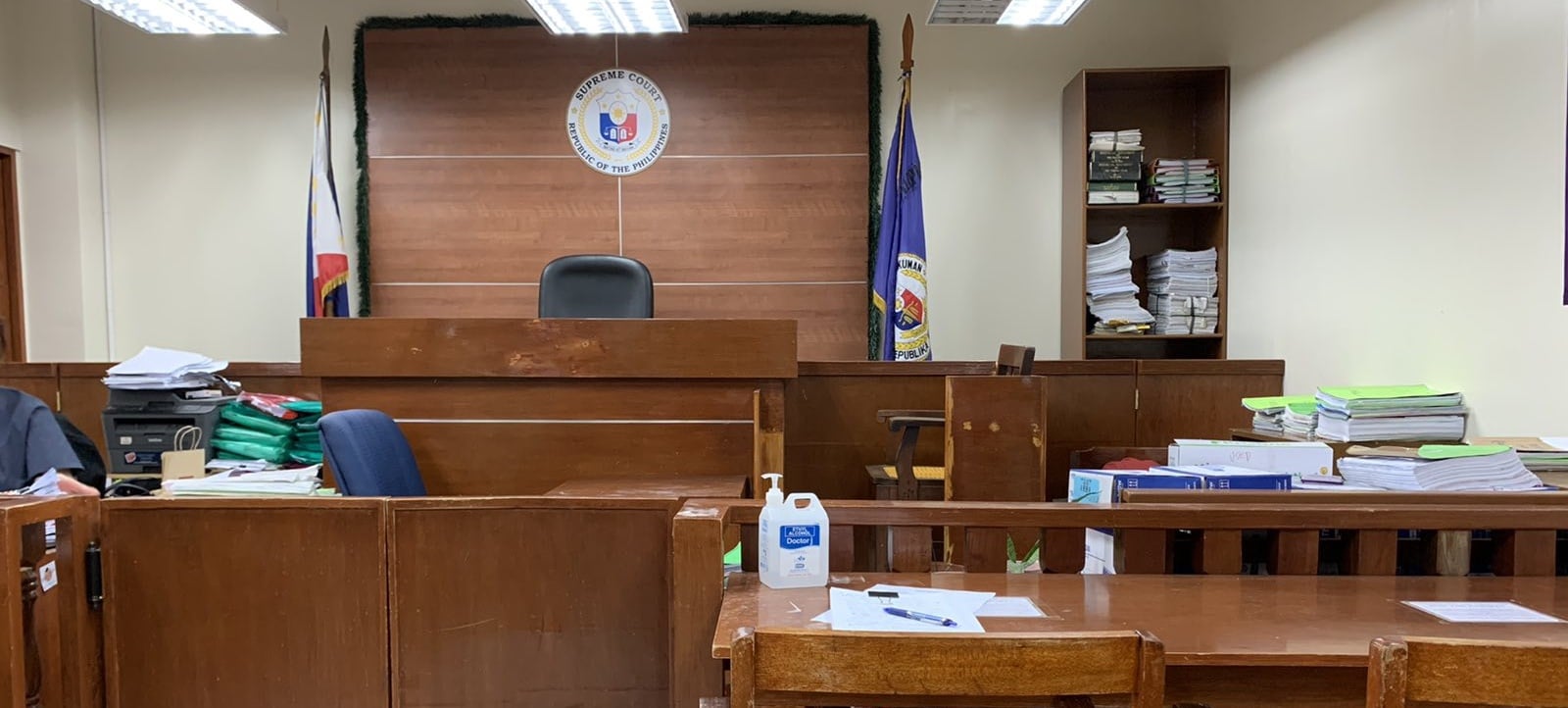
Courts are overloaded with cases so expect the process to take some time
You can cancel the encumbrance created from Reconstitution by filing a motion in court.
(Yes, the only way to cancel an encumbrance is to go to court.)
Section 9 of the same Act allows the removal of the encumbrance under Section 7.
A cancellation of encumbrance must be filed two years after the date of reconstitution of the title.
If you file earlier than 2 years, the case will be dismissed, so it is important to wait until the 2 year period is over.
What is the process to cancel an encumbrance under Section 7 RA 26?

The court’s decision must be registered with the Registry of Deeds for the cancellation of encumbrance
Cancelling an encumbrance under Section 7 RA 26 follows the same process as cancelling other encumbrances.
You will need to do the following:
- You will need to hire a lawyer
- Your lawyer will assess the case and your evidence and then create the Petition
- Case is filed at Court
- Publication is done
- Hearing and presentation of evidence
- Decision
- Removal of Annotation at the RD
Publication is needed for the cancellation of the encumbrance under Section 7 RA 26.
Publication is required so that people who may have an interest in the property are informed and have enough time to indicate their claim on the property.
Publication must be done twice in successive issues of the Official Gazette at least thirty (30) days before the date of hearing.
Publication is necessary to ensure that you have complied with the Rules of court.
If publication is not done, then it is possible that the later on someone can state that the Rules of court were not followed and state that the case was impaired.

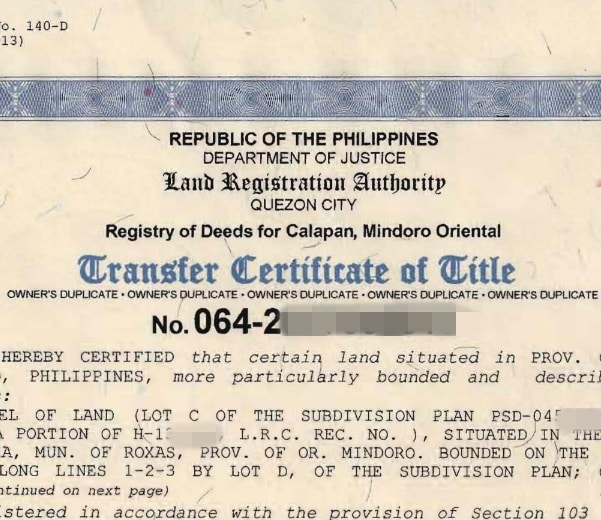
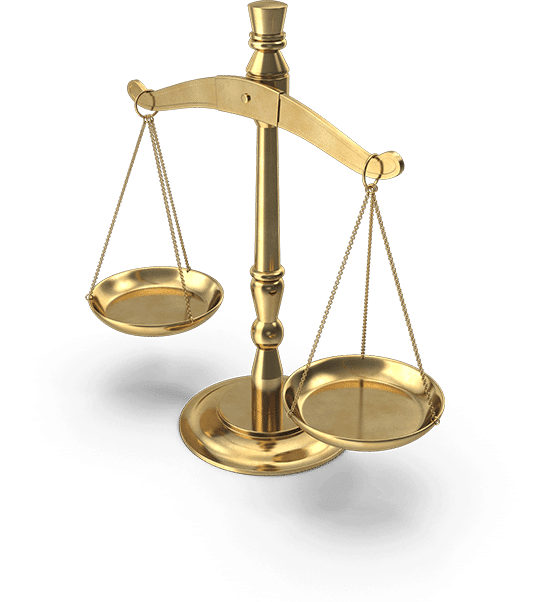



0 Comments